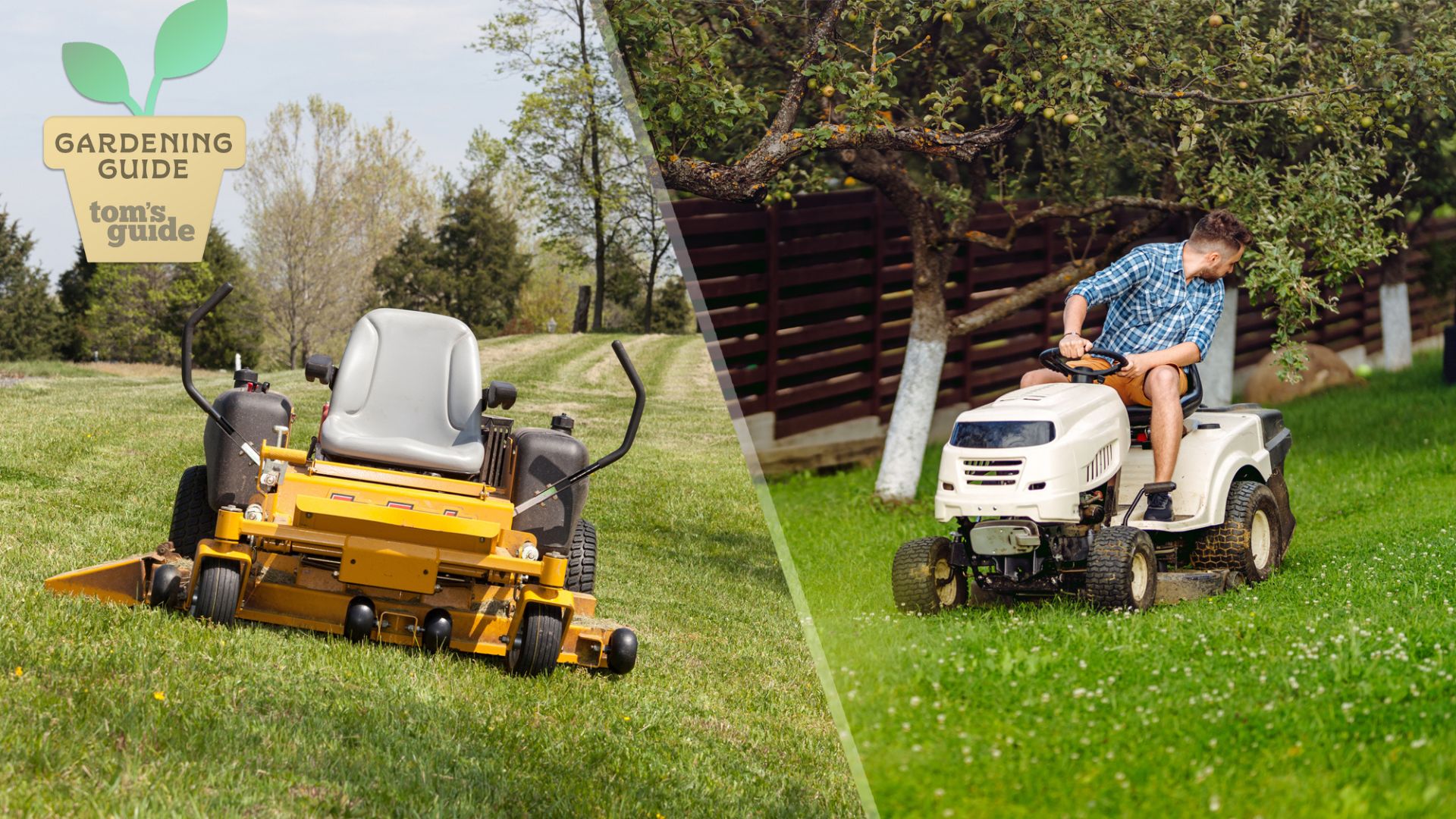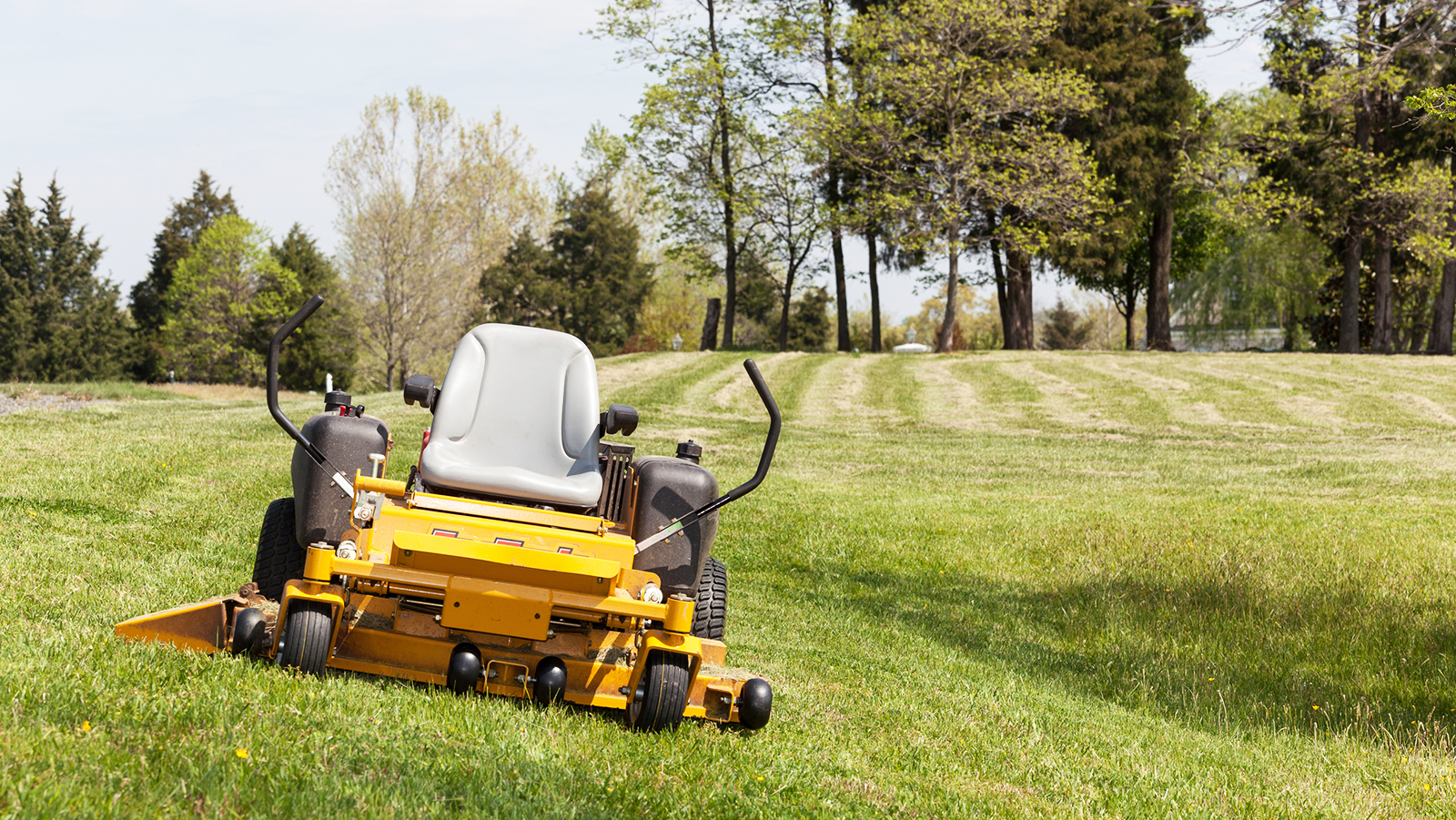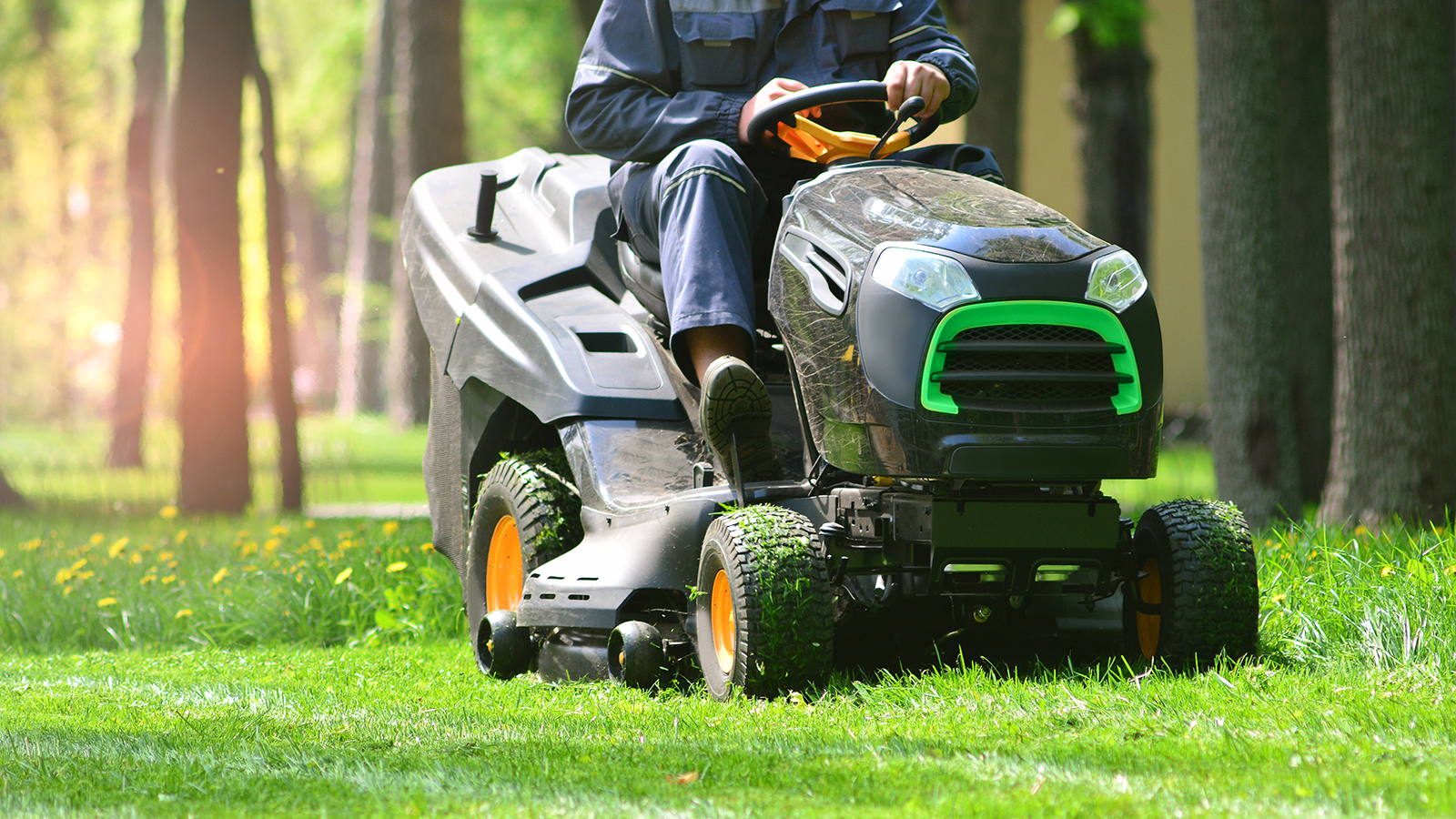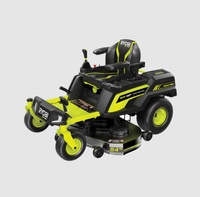Zero-turn vs. tractor riding mowers: Which is right for you?
Two types of mowers meant for large lawns, but only one is best for you

Mowing your lawn can seem like a never-ending task — especially if your lawn is large and sprawling.
If a regular push mower doesn’t cut it for you, there are two options to consider: a zero-turn mower and a tractor ride-on mower. But which one will be best for your lawn?
This article will explore the differences between these two types of lawnmowers so you can make an informed decision before making a purchase. To understand the pros and cons of each, we consulted Eduard Negodenko, a landscaping expert and gardener at Avanti Landscaping. Here’s what he told us.
What is a zero-turn lawnmower?

A zero-turn lawnmower is named for its zero-turn radius, which makes it easier for the mower to maneuver around corners and yard obstacles.
The lawnmower’s front and rear wheels can move in opposite directions, which lets the machine turn without moving forward. This helps reduce the time and effort it takes to mow your grass — especially for those with sprawling lawns.
For this reason, zero-turn lawnmowers are often preferred by lawn care professionals.
What are the pros of a zero-turn lawnmower?
Zero-turn lawnmowers are ideal for large yards or homeowners with big budgets. Here are the biggest pros of this type of mower.
Sign up to get the BEST of Tom's Guide direct to your inbox.
Get instant access to breaking news, the hottest reviews, great deals and helpful tips.
Time savings
Because zero-turn lawnmowers are better at handling corners, they can mow a lawn much more quickly than other types of lawnmowers. This makes them ideal for large yards (half an acre or more) or those with numerous flowerbeds.
“A zero-turn mower with a deck of 54 inches or larger is the best choice where the property is 5 acres or larger,” recommends Negodenko. “Such amounts of land require mowers that have the speed as well as precision to cover large spaces, particularly when the property has trees, slopes, or garden beds to consider.”
Speed

Zero-turn lawnmowers can go up to 10 miles per hour, compared to 4-5 mph for riding mowers. This feature lets you mow your lawn much faster using a zero-turn mower than with a riding mower.
If your yard is sprawling, this could cut hours off your mowing time.
Zero turn lawn mowers are an expensive choice, so this $1,000 saving at Home Depot is a welcome saving on the Ryobi Brushless 30 in. Battery Electric Cordless Zero Turn Riding Mower. This mower cuts up to 1 acre per charge, making it perfect for large lawns.
Professional appeal
Because zero-turn mowers are the most common choice for professionals, owning one can give you more professional appeal (whether you’re mowing for a living or just want to impress your neighbors).
You can also enjoy a more professional cut when using a zero-turn mower.
What are the cons of a zero-turn lawnmower?
Of course, zero-turn lawnmowers also have their downsides. Consider the following cons when making your decision.
Unsuitable for hilly yards
Although zero-turn lawnmowers excel at mowing large yards, they’re not always the best choice for hilly terrain. They often don’t have enough power to get up steep hills, and they can be difficult to control on an uneven lawn — especially at high speeds.
Difficult to operate

Because zero-turn lawnmowers operate differently from other vehicles, learning how to drive them can be challenging. A zero-turn mower has two operating bars that you must move independently.
Pushing both bars forward will propel the mower forward while pulling them both back will make it reverse. If you push one bar forward and pull one back, the mower will rotate without moving forward or backward.
Higher price tag
Zero-turn mowers are expensive; unless you have a budget of several thousand dollars, this type of mower will be out of your price range.
They’re also harder to find than tractor mowers, so you’ll have fewer choices of price points if you’re shopping around.
What is a riding tractor lawnmower?

A riding lawnmower is a type of tractor with blades attached to mow your grass efficiently and precisely. This type of mower is more common for homeowners with mid-size to large lawns or those who can’t push a mower due to physical limitations.
Tractor lawnmowers are generally easy to operate, and some even come with attachments to catch grass clippings or mulch leaves in the fall.
What are the pros of a riding tractor lawnmower?
A riding tractor lawnmower can cut your grass faster (and with less manual labor) than a push mower. Here are the most significant benefits of this type of lawnmower.
Easy operation
If you can drive a car, you can operate a riding mower. Lawn tractors are rear-wheel drive vehicles that operate using a steering wheel, a gas pedal, and a brake pedal. This makes them easy for most people to operate.
“For a riding mower, [a] 42-inch deck is a good recommendation to cover more ground in a lesser time frame,” says Negodenko.
Better on uneven terrain

Tractor lawnmowers can easily traverse rocky or uneven terrain, which makes them a great choice if your lawn is hilly or has bumps.
“A heavy-duty garden tractor may also be a consideration for properties that have open fields because they can withstand rough terrain and have available attachments for other landscaping needs,” says Negodenko.
The Cub Cadet is $150 off at Home Depot right now. Built in America, this gas riding lawn mower has a 42 inch cutting width and can cut up to two acres on a tank.
More affordable
While zero-turn mowers can cost several thousand dollars, you can get a tractor mower for much less (prices typically start at around $1,500).
A riding mower is much more affordable if you’re working with a limited budget. You may even be able to find a used model for much less than a new one.
What are the cons of a riding tractor lawnmower?
A riding tractor-mowers will work well for many homeowners, but that doesn’t mean they’re for everyone. The following are the most significant cons of this type of mower.
Wide turn radius

Riding lawnmowers have a large turning radius, which means you might need to maneuver back and forth several times to reach certain spots of your lawn.
This can increase your mowing time and means you have to be more aware of which areas of your lawn you’ve cut and which ones you haven’t.
Less precise cut
Because of their wider turn radius, riding mowers can be less precise at mowing your lawn. You might find missed spots of grass after you’ve finished and need to go over it again with a push mower.
You might also be unable to mow the edges of your lawn properly with a riding mower.
Which is right for you?
Either option could be the right choice if you have a large area of land to mow. “A push mower becomes inefficient and time-consuming for up to 3 acres; hence, either a riding mower or even a zero-turn mower is justified,” explains Negodenko.
Therefore, your choice comes down to two factors: your budget and your yard’s terrain.
A zero-turn mower is the best choice if you have a relatively flat yard and ample budget. You’ll spend less time mowing your lawn, freeing up that time to spend on your hobbies.
However, if you have a limited budget or your yard is hilly, bumpy, or rocky, it’s best to go with a ride-on tractor lawnmower.
More from Tom's Guide

Catherine Hiles has over a decade of experience writing and editing on various topics, including home improvement, personal finance, home finances, pet ownership, and parenting. Her work has been featured on BobVila.com, TIME Stamped, The Penny Hoarder, and more. In her spare time, Catherine enjoys running, reading, spending time with her kids and dogs, and tackling projects around the house.
You must confirm your public display name before commenting
Please logout and then login again, you will then be prompted to enter your display name.


